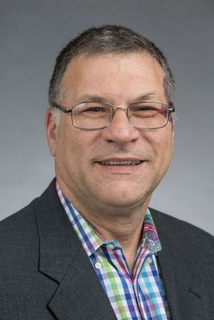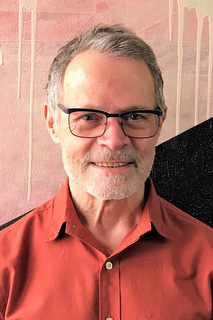
Laura Abrams
Growing Up Behind Bars: Mechanisms of Desistance for Juvenile Lifers
In the wake of the U.S. Supreme Court decisions in Miller v. Alabama (2012) and Montgomery v. Louisiana (2016), many “juvenile lifers” face the possibility of release through state resentencing laws. Desistance theories pertaining to violent youthful offenders suggest that a blend of maturation (aging out), identity shifts and internal motivation, and opportunities to adopt adult roles and responsibilities will lead to cessation of criminal activity. Yet these theories may not apply to juvenile lifers as they have limited opportunity to adopt adult responsibilities while imprisoned, less motivation to desist if freedom is not viewed as attainable, and in the context of the prison, often engage in criminal behavior for survival. This qualitative study explored mechanisms of desistance behind bars for recently released adult males (ages now 40-65), all of whom were convicted of a homicide offense in their teens and sentenced to life without parole or an indeterminate life sentence, and who have spent 20-40 years imprisoned. The method included two in-depth face-to-face interviews. Themes concerning survival, spirituality, growing up, finding purpose, regret, and reckoning with the past all contributed to various patterns and timings of desistance in violent prison contexts. The findings suggest new ideas for theory and alternatives to incapacitation for youth convicted of homicide
Biography:
Laura Abrams is a Professor of Social Welfare and Department Chair at UCLA Luskin School of Public Affairs. Abrams’ scholarship focuses on improving the well-being of youth and young adults with histories of incarceration. Her ethnographic studies have examined youths’ experiences of criminality, risk, and institutions seeking to reshape their identities through both therapeutic and punitive practices. These themes are presented in her 2013 book (co-authored with Ben Anderson-Nathe) Compassionate Confinement: A Year in the Life of Unit C (Rutgers University Press). Her most recent book (co-authored with Diane Terry), Everyday Desistance: A Transition to Adulthood Among Formerly Incarcerated Youth (Rutgers University Press, 2017), examines how formerly incarcerated young men and women navigate reentry and the transition to adulthood in the context of urban Los Angeles. Dr. Abrams is also the lead editor of a 2016 multidisciplinary volume on the role of volunteers and non-profits in changing lives and promoting more humane conditions in prisons and jails, The Voluntary Sector in Prisons: Encouraging Personal and Institutional Change (Palgrave, 2016). Abrams is currently involved in several studies concerning juvenile justice, reentry, and transition-age youth both locally and globally.

Jennifer Copp
The Impact of Incarceration on the Risk of Violent Recidivism
Whether incarceration heightens an individual’s likelihood of recidivating is at the center of prison policy discussions. Yet rigorous empirical studies on the nature of the incarceration-recidivism link are limited. As a whole, existing research suggests that the effect of imprisonment, relative to non-custodial sanctions, is either null or slightly criminogenic. These findings call into question the ability of prisons to exert a specific deterrent effect. They also suggest that prisons are failing to address the underlying causes of recidivism among inmate populations. An important consideration, however, is the extent to which the effects of imprisonment are heterogeneous. The current discussion further unpacks the effect of prison by considering whether and how imprisonment influences the risk of violent recidivism. We review the different theoretical perspectives invoked to explain the association between incarceration and future violence, as well as the existing research evidence. The paper concludes with implications for theory, research, and policy.
Biography:
Jennifer Copp is an Assistant Professor in the College of Criminology and Criminal Justice at Florida State University and Director of the Institute for Jail Policy and Research at FSU’s Center for Criminology and Public Policy. Her recent work examines the consequences of incarceration for individuals and families, and the influence of intimate and familial relationships on crime and other problem behaviors.

Sarah Desmarais
Current Issues in Violence Risk Assessment
(with Samantha Zottola)
The use of violent risk assessment instruments has come to be recognized as a key component of evidence-based criminal justice policy, practice, and reform. To that end, there have been hundreds of violent risk assessment instruments developed over the last 40 years, and an abundance of studies investigating their reliability and validity. In general, the research converges on the finding that violent risk assessment instruments produce more accurate and consistent estimates of violence risk than do unstructured professional or clinical judgments. However, the evidence supporting the degree to which the results of violent risk assessment instruments are used to inform decision-making and their effectiveness as a strategy to reduce violent recidivism is lacking. This paper discusses the state of science as it relates to the assessment of risk for violent recidivism, highlighting current issues of concern and empirical investigation.
Biography:
Sarah Desmarais is an Associate Professor in the Applied Social and Community Psychology Program and Director of the Center for Family and Community Engagement at North Carolina State University. She received her Ph.D. from the Law and Forensic Psychology Program at Simon Fraser University. Dr. Desmarais’ research focuses on the assessment and treatment of risks and needs associated with criminal behavior, interpersonal violence, and terrorism. She has more than 100 peer-reviewed publications on topics including violence and mental illness, risk assessment strategies, domestic violence, and terrorism. She has held over $4.8 million in grants from agencies including the National Institute of Mental Health, the National Institute on Drug Abuse, and the National Institute of Justice. Dr. Desmarais has conducted trainings and workshops for mental health and criminal justice professionals around the world and has written white papers that have informed local, state, and federal legislation. She has co-authored professional manuals that guide the assessment and management of violence and related risks that have been translated into 10 languages and are being used in behavioral health and correctional agencies in more than 20 countries. Dr. Desmarais serves on local behavioral health and criminal justice committees, as well as state and federal policy taskforces.

Eric Janus
Preventing Sexual Violence: Alternatives to Long-Term Confinement
The past three decades have produced a massive and comprehensive movement to incapacitate people convicted of sex offenses. In addition to classic criminal justice responses—increased sentences and lengthy periods of post-confinement supervision—this movement has deployed unprecedented, and unique, reliance on so-called regulatory means to achieve post-prison and post-correctional control. Thus, long-term confinement of sex offenders comprises a series of physical, geographic, and informational banishments. The question posed is whether there are alternatives to this system that would do a better job of preventing sexual violence. Central to understanding this system is the notion of sex-offender exceptionalism: the idea that “sex offenders” are different in kind from other offenders, and thus require a wholly different kind of control. My presentation will address the origins and power of this notion, tying it specifically to efforts to push back against feminist-inspired frameworks for understanding, and combatting, sexual violence. I will argue that the most effective alternative to long-term confinement—as it is currently constructed and implemented—involves a comprehensive reframing of the issue of sexual violence prevention, changing the focus from identifying and exiling the “most dangerous” to developing empirically sound approaches to addressing the “most danger.”
Biography:
Eric Janus served as President and Dean of William Mitchell College of Law from 2007-2015, overseeing the establishment of an Indian Law Program, the first hybrid online/on-campus JD program among ABA-approved American law schools, and the merger with Hamline University School of Law to create the Mitchell Hamline School of Law. Professor Janus’ scholarly focus has been on constitutional and public policy considerations in the development of so-called regulatory approaches to sexual violence prevention. Cornell University Press published his book Failure to Protect: America’s Sexual Predator Laws and the Rise of the Preventive State. His latest book, co-authored with Drs. Robert Prentky and Howard Barbaree, is Sexual Predators: Society, Risk and the Law (Routledge, 2015). In 2017, he established the Sex Offense Litigation and Policy Resource Center at Mitchell Hamline School of Law, funded by a grant from the Vital Projects Fund. He serves at the Center’s Director in its efforts to provide support for impact litigation and policy-reform work designed to produce constitutional, effective, humane, and empirically sound sex offense policies.

Cecelia Klingele
Labeling Violence
In recent years, federal and state-level criminal justice reforms have softened the punitive responses to crime that defined the quarter-century from 1980-2005. The main beneficiaries of these reforms have been nonviolent criminals, who are increasingly eligible for pre- and post-charge diversion, expungement, early release from custody, and early discharge from community supervision. For those convicted of violent offenses, not much has changed: sentences remain long; opportunities for release remain few; and conditions of post-release supervision are tightly enforced, leading to high rates of return to prison. The justification for a harsh response to violent crime is that such crime inflicts significant harm and represents a dramatic deviation from standards of acceptable behavior. In fact, “violent” behavior—that is, behavior that is intended to cause, or does in fact cause, physical injury to another person—is hardly anomalous. Across the life-course, and particularly in youth and young adulthood, such behaviors frequently occur across a broad spectrum of the population—most of whom are never convicted of criminal behavior. This article explores why only some behavior is labeled violent, and what implications this fact has for the sentencing and correctional management of people convicted of violent crimes.
Biography:
Cecelia Klingele is an Associate Professor at the University of Wisconsin Law School, where she teaches courses in criminal law, Constitutional criminal procedure, policing, and sentencing and corrections. She is a faculty associate of the Frank J. Remington Center, the La Follette School of Public Affairs, and the Institute for Research on Poverty. Professor Klingele’s academic research focuses on criminal justice administration, with an emphasis on community and institutional corrections. She has served as Associate Reporter for the American Law Institute’s Model Penal Code: Sentencing revision (2012-2018); External Co-Director of the University of Minnesota Robina Institute’s Sentencing Law & Policy Program (2013-2018); and co-chair of the Academic Committee of the American Bar Association’s Criminal Justice Section (2009-2013).

Megan Kurlychek
Reducing Recidivism Among Serious and Violent Youth
The media and popular culture are replete with images of violent youth gangs and serious delinquents that leave many individuals fearful of youth in general and alarmed for their own personal safety. Political rhetoric has often mirrored, if not fueled, these images of youth with popular campaign slogans from the get tough on crime era touting “Do the Crime, Do the Time.” This simple statement assumes that everyone committing a crime is of equal culpability for the offense, and thus an adult criminal justice sentence proportionate to the harm done should be the answer to reducing recidivism. Yet, this simple statement directly contradicts all we empirically know about youth and youth violence. This article will review what we know about the phenomenon of youth violence and the youth who become involved in these dangerous behaviors. It then moves to a discussion of risk and needs assessments, best practices and evidence-based programming. The article concludes with policy directives to reduce violent recidivism among youth as well as a discussion of the remaining gaps in knowledge that should serve as a direction for future research.
Biography:
Megan Kurlychek is a Professor of Criminal Justice at the University at Albany School of Criminal Justice. She also currently serves as Executive Director of the New York State Youth Justice Institute and Editor of Justice Quarterly. Her research interests include juvenile justice and delinquency, sentencing and corrections, and the collateral consequences of a criminal record and unanticipated impacts of system contact. Her work has been published in the field’s leading journals, such as Criminology, Criminology and Public Policy, and Justice Quarterly, and she has authored two books on juvenile justice. However, she also maintains a commitment to policy research and translating academic findings to practitioners. She conducts many policy evaluations for local and state governments and maintains a commitment to advancing the practice of justice through academic advancement.

Edward Latessa
Effective Supervision of Violent Offenders in the Community
(with Myrinda Schweitzer Smith)
Intermediate sanctions were first introduced in the mid-1980s to alleviate the burgeoning prison population and provide a cost-effective alternative to incarceration. Recognized as a punishment falling between traditional probation and incarceration, these sanctions are used with all types of justice involved individuals, including violent. However, the research on intermediate sanctions with violent offenders is mixed, at best. This paper will review the current research on the use of intermediate sanctions in community supervision with violent offenders. The gaps and limitations with the research will be discussed along with suggestions on how to address these areas. Finally, a series of recommendations for policymakers and practitioners will be provided.
Biography:
Edward J. Latessa is Director and Professor of the School of Criminal Justice at the University of Cincinnati. Dr. Latessa has published over 170 works in the area of criminal justice, corrections, and juvenile justice. He is co-author of eight books, including What Works (and Doesn’t) in Reducing Recidivism, Corrections in the Community, and Corrections in America. Professor Latessa has directed over 195 funded research projects including studies of day reporting centers, juvenile justice programs, drug courts, prison programs, intensive supervision programs, halfway houses, and drug programs. He and his staff have also assessed over 1,000 correctional programs throughout the United States, and he has provided assistance and workshops in forty-eight states. Dr. Latessa served as President of the Academy of Criminal Justice Sciences (1989-1990). He has received numerous awards and in 2013 was identified as one of the most innovative people in criminal justice by a national survey conducted by the Center for Court Innovation in partnership with the Bureau of Justice Assistance and the U.S. Department of Justice.

Michael Light
Immigration and Violent Crime: Triangulating Findings across Diverse Studies
(with Isabel Anadon)
Since 1990, the foreign-born population has more than doubled and the undocumented population has more than tripled, representing the largest influx of immigrants to the United States—in both absolute and relative numbers—in its history. Against this backdrop, two questions dominate contemporary public and political debate on immigration: does immigration increase violent crime, and what are the most effective policies for dealing with unauthorized immigration (e.g., sanctuary policies, increased deportations)? Both of these questions have received substantial research attention; however, these bodies of work have largely developed independently of one another. As a result, we have failed to critically examine the extent to which they converge on a consistent set of findings. Attempting to address this gap, this article systematically reviews both areas of inquiry with an eye towards triangulating common findings between them. To frame this discussion, Section I details the theoretical links between immigration (both legal and undocumented) and violence. Section II then reviews the individual and macro-level research as to whether immigration and violence are related. Within this section, we pay particular attention to the key methodological issues critical to the study of immigration and crime. Section III then examines the criminological consequences of three contemporary immigration policies: (1) immigration enforcement through increased arrest and deportation; (2) “sanctuary” policies; and (3) “amnesty” provisions for unauthorized immigrants.
Biography:
Michael T. Light is an Associate Professor of Sociology and Chicano/Latino Studies at the University of Wisconsin-Madison. His research primarily focuses on crime, punishment, and immigration.

Edmund McGarrell
Focused Deterrence Violence Prevention at Community and Individual Levels
The focused deterrence violence prevention model emerged as part of Boston Ceasefire in the mid-1990s. Since that time, solid research evidence has emerged indicating focused deterrence can have an effect on community levels of violence, particularly gang- and group-related violence. It is considered an evidence-based violence reduction strategy. The evidence of the impact on individuals, however, is much more limited and mixed. This article presents the focused deterrence model, reviews the research evidence, and considers the implications for reducing violent recidivism. Several lingering research questions as well as considerations for leveraging focused deterrence along with other recidivism reduction strategies are discussed.
Biography:
Ed McGarrell is a Professor in the School of Criminal Justice (SCJ) at Michigan State University and serves as the Director of the Michigan Justice Statistics Center. McGarrell’s research on communities and crime focuses on violence prevention and control. Much of this work involves research to understand local violent crime patterns, the translation of research to practice, and the evaluation of the impact of violence prevention and control strategies. Since 2002, he has led a team that has served as the national research partner for the U.S. Department of Justice’s Project Safe Neighborhoods (PSN) program. The PSN experience has resulted in collaborative research, and research-based training and technical assistance, with policing agencies throughout the U.S. He also works closely with criminal justice and community partners in Detroit and Flint on violence prevention and school safety initiatives. Recent articles have appeared in Crime and Delinquency, Criminology and Public Policy, European Journal of Criminology, Journal of Criminal Justice, Journal of Experimental Criminology, and Police Quarterly.

Daniel O’Connell
Violent Offending Trajectories and Desistance
(with Christy Visher & Lin Liu)
Past studies demonstrated solid evidence of the heterogeneity of offending patterns over the life course. However, often general crime and delinquency is used as the outcome variable and we know little about the particular trajectory of violent offending. This study embarks on the task of investigating violent offending trajectories by analyzing crime histories of 988 criminal-justice involved individuals over 30 years. Specifically, we identify the latent groups among the respondents that demonstrate distinct patterns of violent offending over time, and reveal the factors that explain high activity in violent offending. Trajectory modeling, a mixed-effect model that allows a predictor to have variability in effect size across subgroups, is used in the study. In addition, we use Lasso regression methods to select the predictors that best enhance the predictive accuracy of the model. Three latent groups emerge from our sample, with one group (late-start desisters) demonstrating a sharp increase in violent offending during their 20’s and 30’s, one group (gradual desisters) exhibiting activeness in violent crime during adolescence while gradually desisting after moving into adulthood, and one group (never convicted) demonstrating consistent inactiveness in violent crime over time. Several predictors emerge that explain these distinct violent offending trajectories; mental health issues and high impulsivity are salient risk factors for late-start violent offending.
Biography:
Daniel O’Connell is the Senior Scientist at the Center for Drug and Health Studies at the University of Delaware. He has been involved in the study of criminal careers with a focus on desistence for over 20 years and has conducted multiple NIDA, NIJ, and BJA funded research projects focused on correctional programming, health related issues in criminal justice, and criminal offending patterns. He has authored over 40 journal articles related to this research and teaches classes in the Delaware Prisons as part of the Inside-Out Prison Exchange Program.

Michael O’Hear
Violent Crime and Punitiveness: An Empirical Study of Public Opinion
(with Darren Wheelock)
Evidence suggests that the public favors tough punishment for individuals who have been convicted of violent crimes, but why? In order to better understand the factors that contribute to punitive attitudes toward violent crime, or “V-punitiveness,” we analyze data from a recent survey of Wisconsin voters as a part of the Marquette Law School Poll. In sum, respondents generally supported prison terms for individuals convicted of violent crime, but this support was not unwavering and unconditional. While analysis of these data identified several variables that are correlated with higher levels of V-punitiveness, neither fear of violent crime nor personal experiences were among them. Instead, V-punitiveness seems more closely tied to broader sets of social beliefs regarding individual responsibility, traditional values, and the like. Our results suggest that tough responses to violent crime may be supported more for expressive than instrumental reasons. Thus, efforts to change public policy in this area may need to contend with expressive considerations. If reformers wish to change minds about legal responses to violent crime, instrumental arguments based simply on “what works” in reducing violent recidivism may come up short.
Biography:
Michael O’Hear is a Professor at Marquette Law School, where he teaches criminal law and related courses. He is an editor of the Federal Sentencing Reporter and the author or coauthor of more than seventy scholarly articles, books, and book chapters on sentencing, criminal procedure, and other legal topics. His books include The Failed Promise of Sentencing Reform; Prisons and Punishment in America: Examining the Facts; and Wisconsin Sentencing in the Tough-on-Crime Era: How Judges Retained Power and Why Mass Incarceration Happened Anyway

Pamela Oliver
Returns to Prison for Violent and Nonviolent Offenders
This paper uses restricted National Corrections Reporting Program data to describe state prison inmates convicted of violent offenses and their patterns of being re-incarcerated for new violent crimes after their first release by state, offense, and race. Violent offenses are not all the same. The largest categories of violent offenders entering and leaving prison committed armed robbery or aggravated assault; those convicted of murder are a large group of those in prison because of their very long sentences compared to other offense groups. States vary greatly in the mix of offenses among those entering, leaving, and in their prisons, a variation that is affected both by patterns of offending and by sentencing practices. Overall, a large majority of violent offenders released from prison do not reoffend: among violent offenders released from prison after 1999, less than a fifth had been recommitted for a new violent offense within five years. However, another fifth had been re-incarcerated either for a non-violent crime or for a parole violation with no new crime. Three fifths remained free without committing a new crime. Violent offenders’ rates of re-incarceration for new offenses were lower than those of nonviolent offenders. However, these broad patterns vary greatly between states, from a low of essentially zero to a high of 45 percent in recording new commitments for previously released violent offenders. States also vary greatly in the likelihood of a released offender being re-incarcerated on a parole violation with no new offense, which, in turn, affects the probability of being available to commit a new offense. The paper explores these variations, looking to see whether there are any consistent patterns by state, offense, or race in rates of violent re-offending after proper controls for the competing risks of being incarcerated for a parole violation or nonviolent offense. The paper provides no direct information on alternatives to incarceration as it examines only those who have been incarcerated, but the high variability between states suggests that the functioning of state systems plays an important role in outcomes.
Biography:
Pamela Oliver is a Professor of Sociology at the University of Wisconsin who has published many articles and a book on collective action and social movements. She has received multiple NSF grants for her work. Since 1999, she has devoted much of her time to analyzing and speaking about statistical patterns of racial disparity in criminal justice in Wisconsin and the nation. She has made over 100 public presentations on these issues and served on the Governor’s Commission to Reduce Racial Disparities in Criminal Justice in 2007-2008 and the Dane County Task Force on Racial Disparities in 2008-2009. She is working on a project about the politics of incarceration and analyzing differences among U.S. states and metro areas in their racial disparity patterns using NCRP data. She has posted recent working papers on her blog https://www.ssc.wisc.edu/soc/racepoliticsjustice/ and older working papers on her web site https://www.ssc.wisc.edu/~oliver/.

William Sabol
Robbery, Recidivism, and the Limits of the Criminal Justice System
(with Richard Wright & Thaddeus Johnson)
The over 175,000 convicted robbers currently serving time in the U.S. eventually will be released. Over half of them will have been there before. Locked up as mostly young men and women, they will return to the communities they left behind, possessing little more than a criminal record and the clothes on their back. Many will find themselves owing supervision fees to the state; almost all will face legal barriers to employment, decent housing, political participation, and other sources of social inclusion. What can the criminal justice system—a system designed to prevent and deter lawbreaking—realistically do to keep them from returning to prison? This article explores that question by drawing on published accounts from a sample of 86 individuals actively involved in committing armed robberies, many of whom have returned to crime after being released from prison. The emphasis throughout is on the ways in which pervasive social exclusion, both a cause and a consequence of their lawbreaking, challenges our ability to “reintegrate” such offenders who in reality were not integrated to begin with.
Biography:
William J. Sabol is a Professor in the Department Criminal Justice & Criminology at Georgia State University. He teaches and conducts research on corrections and sentencing policy and crime statistics. During the past 30 years, he has held positions in government, private sector research institutions, and universities, including serving as the Director of the Bureau of Justice Statistics.

Myrinda Schweitzer Smith
Effective Supervision of Violent Offenders in the Community
(with Edward Latessa)
Intermediate sanctions were first introduced in the mid-1980s to alleviate the burgeoning prison population and provide a cost-effective alternative to incarceration. Recognized as a punishment falling between traditional probation and incarceration, these sanctions are used with all types of justice involved individuals, including violent. However, the research on intermediate sanctions with violent offenders is mixed, at best. This paper will review the current research on the use of intermediate sanctions in community supervision with violent offenders. The gaps and limitations with the research will be discussed along with suggestions on how to address these areas. Finally, a series of recommendations for policymakers and practitioners will be provided.
Biography:
Myrinda Schweitzer Smith received her Ph.D. from the University of Cincinnati and is a Senior Research Associate and Deputy Director at the Corrections Institute in the School of Criminal Justice at the University of Cincinnati. Dr. Schweitzer’s research interests include the assessment of correctional programs, the science of implementation and knowledge transfer, and more generally correctional treatment and rehabilitation. She has co-authored several publications, presented nationally and internationally on correctional interventions, and served as a project director for over 300 correctional projects. Specific topics of research and service include a state-wide correctional treatment program evaluation, and the development and implementation of cognitive-behavioral programs for general delinquency, criminality, substance abuse, employment, and sexual offending, as well as recent initiatives to implement effective practices for community supervision and support. Most recently, she is responsible for overseeing several federally funded research and service projects to improve the treatment of justice involved individuals in the community.

Jennifer Skeem
Recidivism Reduction for High-Risk (Not Hopeless) Offenders
Across time and populations, a small proportion of people account for the majority of violence and other criminal behavior. These people are often called “psychopaths” or “life course persistent offenders”—reflecting assumptions that they are qualitatively different from their lower risk peers and cannot be effectively treated. In this article, I present evidence that these are not hopeless cases, but instead high-risk cases that should be targeted with intensive treatment to maximize crime prevention. This evidence provides direction for risk reduction by specifying treatment targets (for precision approaches) as well as effective correctional programs. I will also briefly explore the broader prevention possibility that developmentally “wise” interventions provided during the transition from childhood to adolescence could nudge trajectories of at-risk youth in more prosocial directions. This developmental transition marks the beginning of dramatic changes in reward processing, status seeking, and social-affective learning—and could provide an important natural inflection point for risk reduction.
Biography:
Jennifer L. Skeem is the Mack Distinguished Professor of Social Welfare and Professor of Public Policy at the University of California, Berkeley. She is a clinical psychologist who writes and teaches about the intersection between behavioral science and the justice system. Her research is designed to inform violence prevention efforts and legal decision-making about people with emotional and behavioral problems. Specific topics include improving outcomes for justice-involved people with mental illness, understanding psychopathic personality disorder, and promoting prosocial behavior among juveniles at risk for violence. Professor Skeem has authored about 120 articles and chapters and edited two books. She is past President of the American Psychology-Law Society and past member of the MacArthur Research Network on Mandated Community Treatment. She has served on advisory boards for Arnold Ventures and for the Council of State Governments Justice Center, U.S. Sentencing Commission, and U.S. Administrative Office of the Courts (USAO). She served as the “subject matter expert” on violence reduction in a treatment development project for the USAO in 2018.

Faye Taxman
Violence Reduction Using an RNR Framework
Violence presents unique challenges to individuals, communities, and the justice system. The Risk-Need-Responsivity (RNR) model is framed as addressing how to respond to individuals with various forms of violent or violent-related behaviors. The emphasis is on linking individuals to appropriate services, and using services and programs that can assist the individuals with learning to manage their aggressive behaviors. Much of the techniques involve addressing situational responses that occur in natural community environments; the models for delivering services and facilitating change tend to be limited to group-based therapy sessions that are not necessarily adaptable to these environmental cues (where emotions and situations are deemed to be high). Some progress has been made in adaptive therapies that extend past group sessions using interrupters, navigators, or others. But, given the complexities of community environments, there is a need for a systemic RNR framework that looks at the issues related to community capacity and relationship factors that affect the ability of the community to be responsive. This paper will describe the systemic RNR framework and use an example from St. Louis, Missouri, in terms of the implications for improving outcomes on how best to reduce violence.
Biography:
Faye S. Taxman is a University Professor in the Criminology, Law and Society Department and Director of the Center for Advancing Correctional Excellence at George Mason University. She is recognized for her work in the development of seamless systems-of-care models that link the criminal justice system with other service delivery systems, as well as her work in reengineering probation and parole supervision services and in organizational change models. She has conducted experiments to examine different processes to improve treatment access and retention, to assess new models of probation supervision consistent with RNR, and to test new interventions. She recently completed a randomized controlled trial that examined the impact of using computerized motivational interviewing (MI) intervention and social work provided MI intervention at the onset of probation to increase treatment access. Her work covers the correctional system from jails and prisons to community corrections, and adult and juvenile offenders. She has active “laboratories” with the Maryland Department of Public Safety and Correctional Services; Hidalgo County, Texas, Community Services Corrections Department; and Alameda County, California, Probation Department. She developed the translational RNR Simulation Tool (www.gmuace.org/tools) to assist agencies to advance practice. She has published more than 200 articles. She is the author of Tools of the Trade: A Guide to Incorporating Science into Practice, and Implementing Evidence-Based Community Corrections and Addiction Treatment (Springer, 2012 with Steven Belenko). She is co-editor of Health & Justice.

Christy Visher
Violent Offending Trajectories and Desistance
(with Daniel O’Connell & Lin Liu)
Past studies demonstrated solid evidence of the heterogeneity of offending patterns over the life course. However, often general crime and delinquency is used as the outcome variable and we know little about the particular trajectory of violent offending. This study embarks on the task of investigating violent offending trajectories by analyzing crime histories of 988 criminal-justice involved individuals over 30 years. Specifically, we identify the latent groups among the respondents that demonstrate distinct patterns of violent offending over time, and reveal the factors that explain high activity in violent offending. Trajectory modeling, a mixed-effect model that allows a predictor to have variability in effect size across subgroups, is used in the study. In addition, we use Lasso regression methods to select the predictors that best enhance the predictive accuracy of the model. Three latent groups emerge from our sample, with one group (late-start desisters) demonstrating a sharp increase in violent offending during their 20’s and 30’s, one group (gradual desisters) exhibiting activeness in violent crime during adolescence while gradually desisting after moving into adulthood, and one group (never convicted) demonstrating consistent inactiveness in violent crime over time. Several predictors emerge that explain these distinct violent offending trajectories; mental health issues and high impulsivity are salient risk factors for late-start violent offending.
Biography:
Christy Visher is Professor of Sociology and Criminal Justice at the University of Delaware and Director of the Center for Drug and Health Studies, a research center focused on substance abuse, health risk behavior, health services, and health policy. Over the past three decades, her research has focused broadly on crime and justice topics, including prisoner reentry, crime prevention strategies, implementing evidence-based practices in the criminal justice system, incapacitation, and use of drug testing in the criminal justice system. Dr. Visher designed and implemented the path-breaking longitudinal study of men and women released from prison, Returning Home: Understanding the Challenges of Prisoner Reentry. Her most recent funded research projects examine strategies to curtail substance abuse among probationers, health challenges facing probationers, and implementation approaches to improve evidence-based practices for assisting men and women with histories of substance abuse after release from prison. Dr. Visher has an M.A. and Ph.D. in Sociology from Indiana University, Bloomington.

Darren Wheelock
Violent Crime and Punitiveness: An Empirical Study of Public Opinion
(with Michael O’Hear)
Evidence suggests that the public favors tough punishment for individuals who have been convicted of violent crimes, but why? In order to better understand the factors that contribute to punitive attitudes toward violent crime, or “V-punitiveness,” we analyze data from a recent survey of Wisconsin voters as a part of the Marquette Law School Poll. In sum, respondents generally supported prison terms for individuals convicted of violent crime, but this support was not unwavering and unconditional. While analysis of these data identified several variables that are correlated with higher levels of V-punitiveness, neither fear of violent crime nor personal experiences were among them. Instead, V-punitiveness seems more closely tied to broader sets of social beliefs regarding individual responsibility, traditional values, and the like. Our results suggest that tough responses to violent crime may be supported more for expressive than instrumental reasons. Thus, efforts to change public policy in this area may need to contend with expressive considerations. If reformers wish to change minds about legal responses to violent crime, instrumental arguments based simply on “what works” in reducing violent recidivism may come up short.
Biography:
Darren Wheelock is an Associate Professor of Criminology and Law Studies in the Department of Social and Cultural Sciences at Marquette University. He also serves as the Director of the Marquette University Criminal Justice Data Analytics Program. His research interests include racial and ethnic stratification, criminology, punishment and social control, and public perceptions of the criminal justice system. Dr. Wheelock’s research involves two lines of investigation. The first examines the impact of criminal punishment on racial inequality. The second investigates the factors that shape the public’s perception of criminal justice policy and punitive attitudes. His published work on these topics have appeared in journals such as the Journal of Contemporary Criminal Justice, Journal of Offender Rehabilitation, The Sociological Quarterly, Social Forces, The British Journal of Criminology, and Crime and Delinquency. He is also the faculty lead on the Marquette University Educational Readiness Program to help current and released prisoners continue their educational pursuits while incarcerated and post-release.

Richard Wright
Robbery, Recidivism, and the Limits of the Criminal Justice System
(with William Sabol & Thaddeus Johnson)
The over 175,000 convicted robbers currently serving time in the U.S. eventually will be released. Over half of them will have been there before. Locked up as mostly young men and women, they will return to the communities they left behind, possessing little more than a criminal record and the clothes on their back. Many will find themselves owing supervision fees to the state; almost all will face legal barriers to employment, decent housing, political participation, and other sources of social inclusion. What can the criminal justice system—a system designed to prevent and deter lawbreaking—realistically do to keep them from returning to prison? This article explores that question by drawing on published accounts from a sample of 86 individuals actively involved in committing armed robberies, many of whom have returned to crime after being released from prison. The emphasis throughout is on the ways in which pervasive social exclusion, both a cause and a consequence of their lawbreaking, challenges our ability to “reintegrate” such offenders who in reality were not integrated to begin with.
Biography:
Richard Wright is Regents’ Professor of Criminal Justice and Criminology in the Andrew Young School of Policy Studies at Georgia State University. He has spent most of his career studying the decision-making processes of active serious offenders in real-life settings and circumstances.

